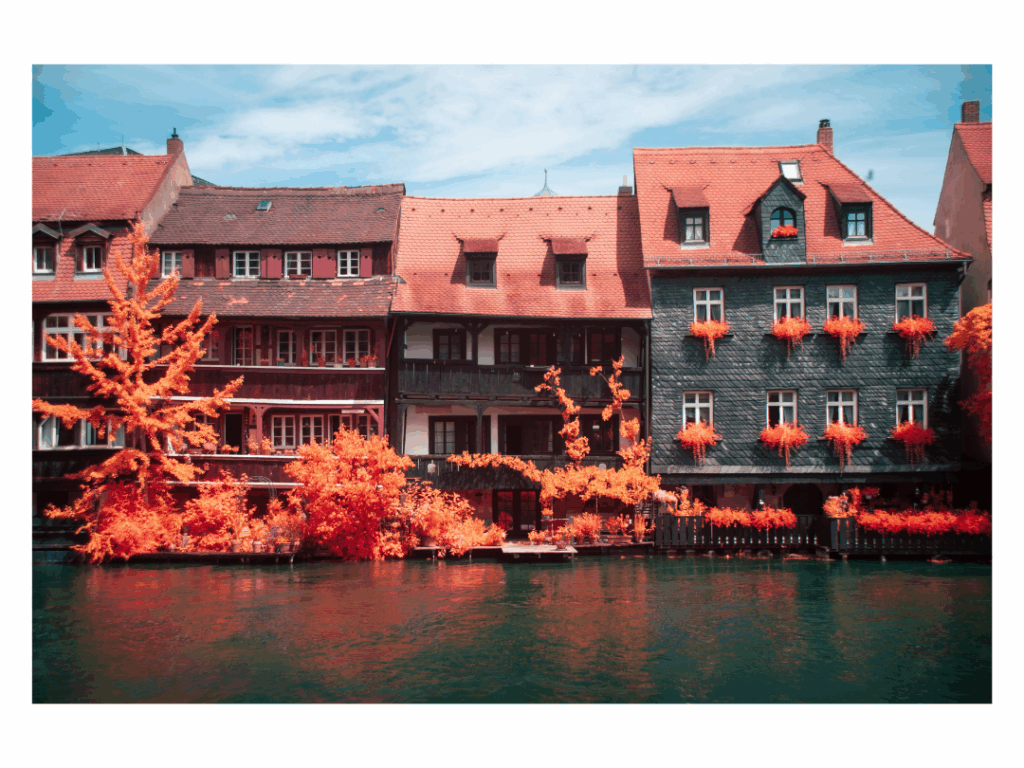Bamberg is often called the “Franconian Rome” because it sits on seven hills, each crowned with a church. Walking through the old town feels like stepping into medieval times. The entire city center is UNESCO World Heritage, and you notice immediately why. Narrow streets, half-timbered houses, and the cathedral all create a strong sense of history.
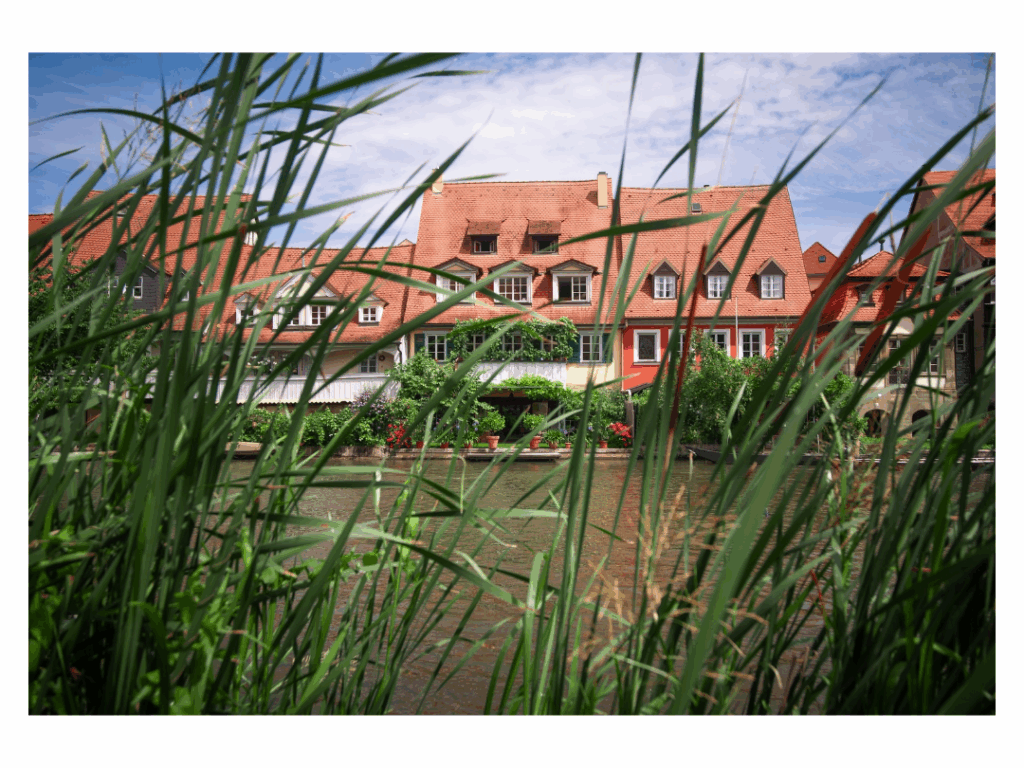
One of the most striking buildings is the Old Town Hall. It stands right in the middle of the Regnitz River, connected by bridges on both sides. Legend says the bishop did not want to give land for a new town hall, so the citizens built it on an artificial island in the river instead. Its painted facades and its unusual position make it one of the most photographed spots in the city. The red trees add a stark contrast to the glowing cyan water in the Infrared pictures, composing a stunning view.
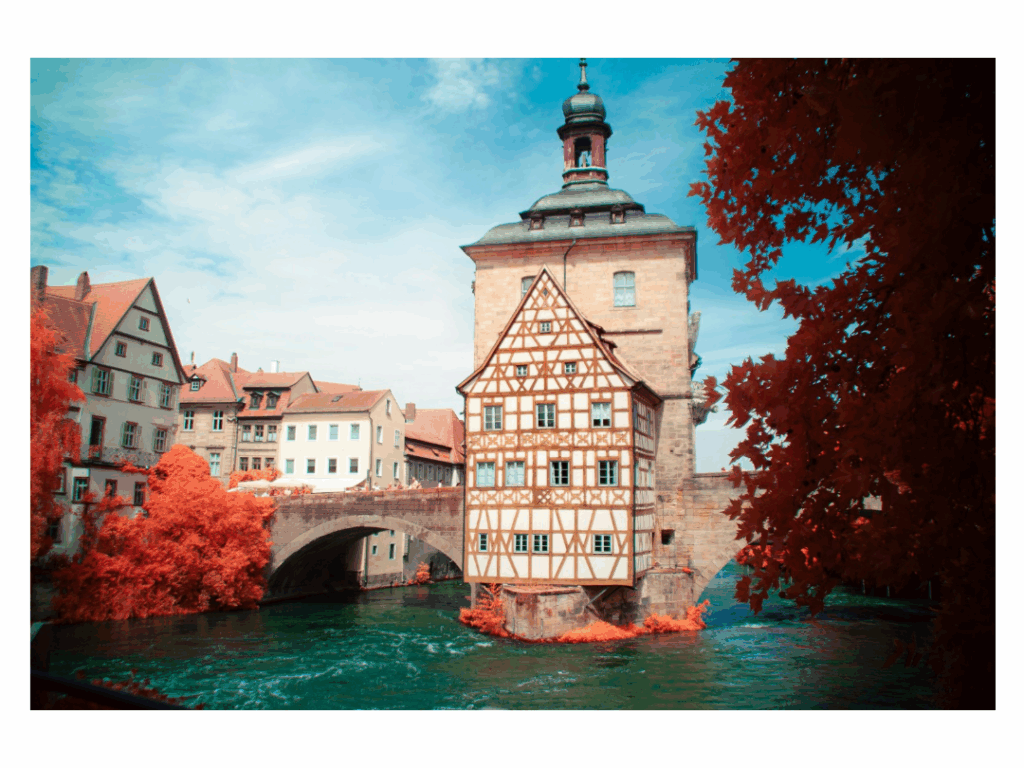
Bamberg is also famous for its cathedral. Inside lies the tomb of Emperor Henry II and his wife Cunigunde, both canonized. The stone sculptures and the atmosphere of the cathedral are impressive. One of the most famous works here is the Bamberg Horseman, a mysterious equestrian statue whose exact meaning is still debated.
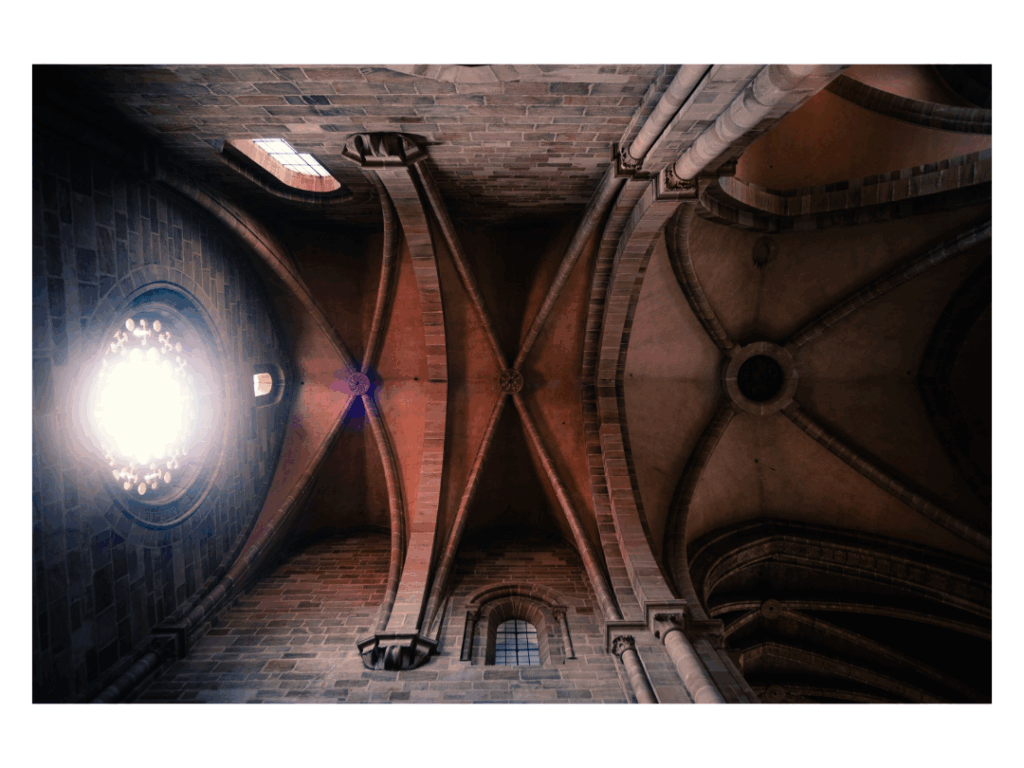
Life in Bamberg is not only about monuments. The small breweries spread throughout the town give the city a unique culture. The most famous is the smoked beer, called Rauchbier, which tastes very different from anything else you’ve probably tried. Drinking one while sitting next to a half-timbered house in the citycentre, you can get a glimpse on what it must have felt like in medieval times.
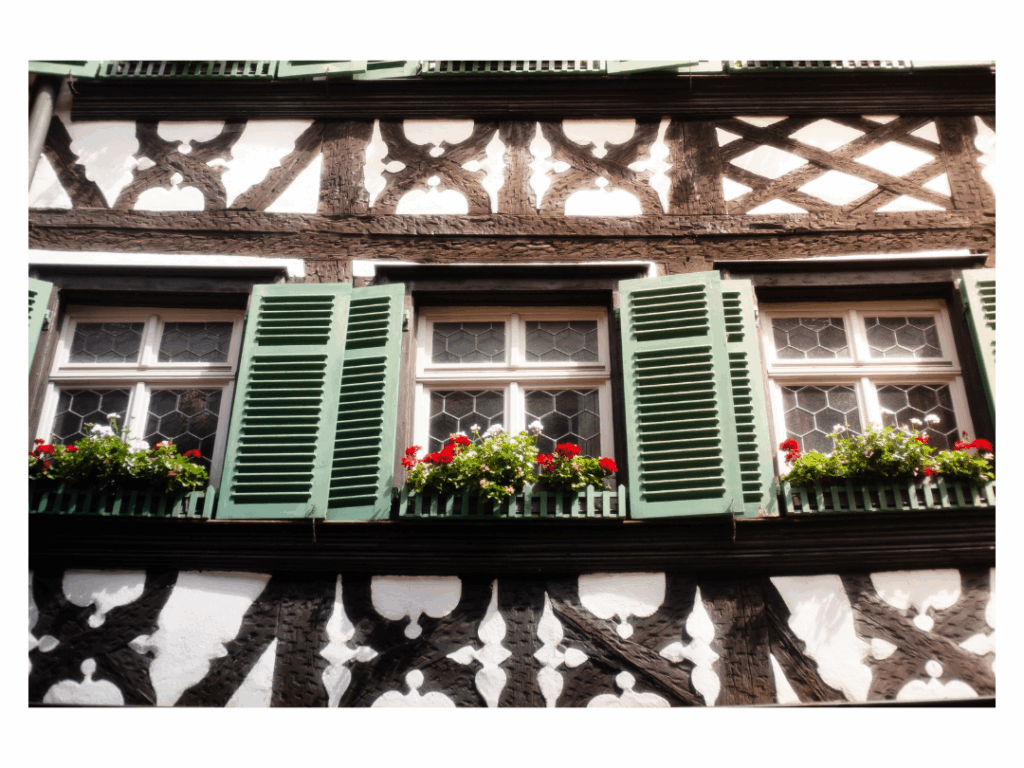
For me, Bamberg was a place where every corner revealed another piece of history. From the canals and bridges to the grand churches and quiet alleys, the city shows how heritage can live in both the big monuments and the small daily traditions.
